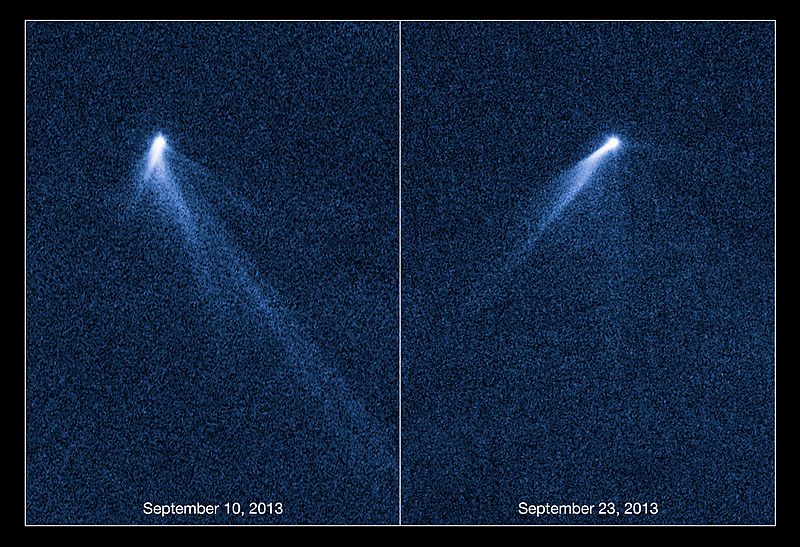Image: Hubble views extraordinary multi-tailed asteroid P2013 P5

Description: These NASA/ESA Hubble Space Telescope images reveal a never-before seen set of six comet-like tails radiating from a body in the asteroid belt and designated P/2013 P5. The asteroid was discovered as an unusually fuzzy looking object by astronomers using the Pan-STARRS survey telescope in Hawaii. The multiple tails were discovered in Hubble images taken on 10 September 2013. When Hubble returned to the asteroid on 23 September its appearance had totally changed — it looked as if the entire structure had swung around. One interpretation is that the asteroid's rotation rate has increased to the point where dust is falling off the surface and escaping into space, where it is swept out into tails by the pressure of sunlight. According to this theory, the asteroid's spin has been accelerated by the gentle push of sunlight. Based on an analysis of the tail structure, the object has ejected dust for at least five months. These visible-light images were taken with Hubble's Wide Field Camera 3. P/2013 P5 is seen on the left as viewed on 10 September 2013, and on the right as seen on 23 September 2013.
Title: Hubble views extraordinary multi-tailed asteroid P2013 P5
Credit: http://www.spacetelescope.org/images/heic1320a/
Author: NASA, ESA, D. Jewitt (University of California, Los Angeles), J. Agarwal (Max Planck Institute for Solar System Research), H. Weaver (Johns Hopkins University Applied Physics Laboratory), M. Mutchler (STScI), and S. Larson (University of Arizona)
Usage Terms: Creative Commons Attribution 4.0
License: CC BY 4.0
License Link: http://creativecommons.org/licenses/by/4.0
Attribution Required?: Yes
Image usage
The following page links to this image:

